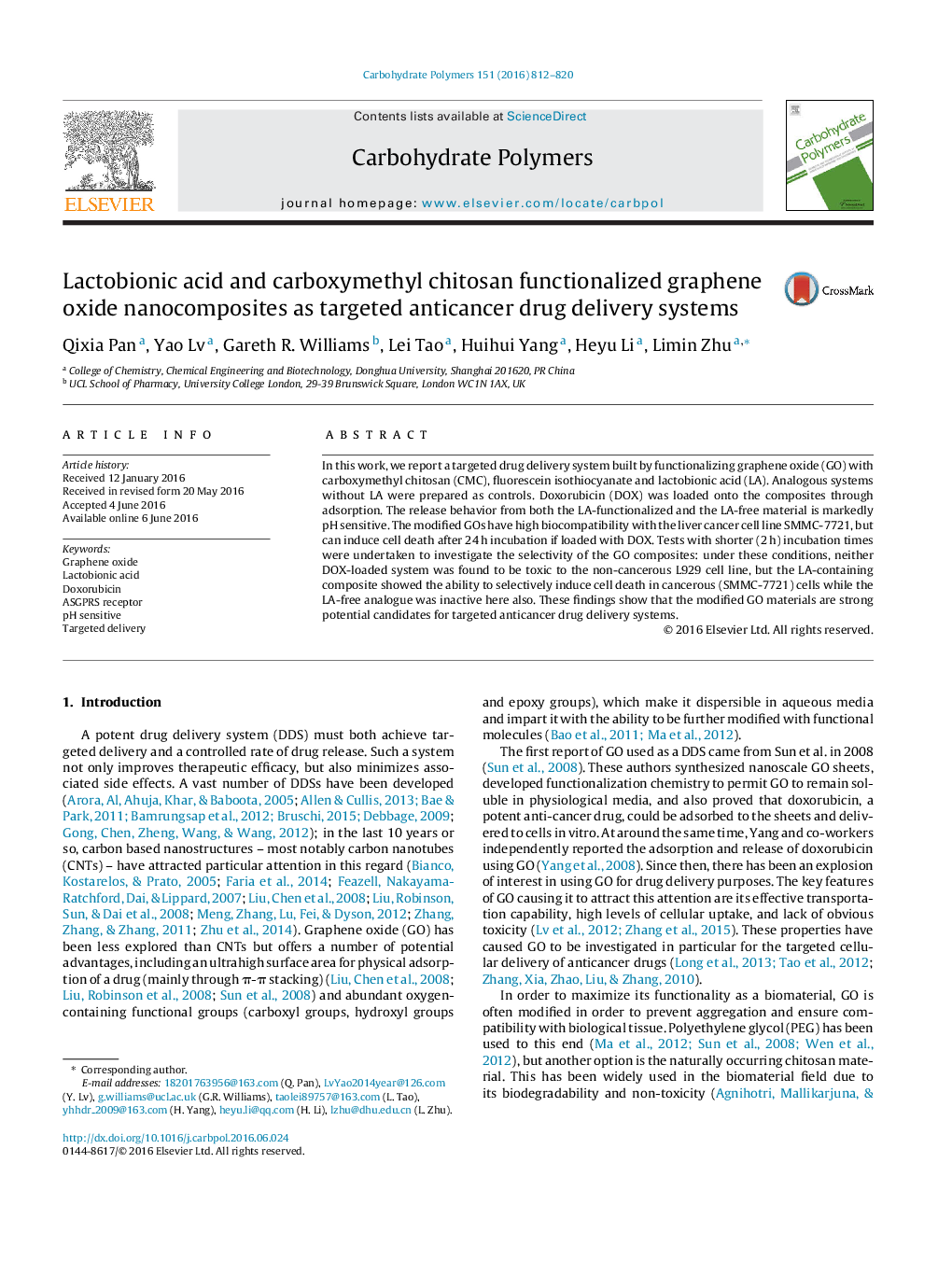| Article ID | Journal | Published Year | Pages | File Type |
|---|---|---|---|---|
| 1383057 | Carbohydrate Polymers | 2016 | 9 Pages |
•Graphene oxide was functionalized with carboxymethyl chitosan, fluorescein isothiocyanate, and lactobionic acid.•The resultant composite can be loaded with doxorubicin with high efficiency.•Doxorubicin release from the drug-loaded systems is highly pH-responsive.•The doxorubicin-loaded graphene oxide composite can target drug delivery to hepatic cells, and efficiently induce cell death.
In this work, we report a targeted drug delivery system built by functionalizing graphene oxide (GO) with carboxymethyl chitosan (CMC), fluorescein isothiocyanate and lactobionic acid (LA). Analogous systems without LA were prepared as controls. Doxorubicin (DOX) was loaded onto the composites through adsorption. The release behavior from both the LA-functionalized and the LA-free material is markedly pH sensitive. The modified GOs have high biocompatibility with the liver cancer cell line SMMC-7721, but can induce cell death after 24 h incubation if loaded with DOX. Tests with shorter (2 h) incubation times were undertaken to investigate the selectivity of the GO composites: under these conditions, neither DOX-loaded system was found to be toxic to the non-cancerous L929 cell line, but the LA-containing composite showed the ability to selectively induce cell death in cancerous (SMMC-7721) cells while the LA-free analogue was inactive here also. These findings show that the modified GO materials are strong potential candidates for targeted anticancer drug delivery systems.
